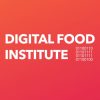Functional food from waste
Teagasc, the Irish Agriculture and Food Development Authority, is leading a project to transform food waste into functional food ingredients. The project aims to extract useful compounds from plant waste, including proteins, fibre and antioxidants that can be used as an ingredient in functional food products, to provide health benefits to consumers. These functional foods have health benefits, e.g., reduce the risk of certain chronic diseases. The project also aims to promote sustainable food production by reducing waste and creating value-added products from by-products.
Agricultural waste into lipids
Rsearchers are investigating a method to transform agricultural waste into lipids for use in meat alternatives. The aim is to produce plant-based meat alternatives using discarded crop parts, such as corn husks. The researchers will convert the waste into a gas, which will then be used to produce lipids through microbial fermentation. The resulting fatty acids will be tailored to create meat alternatives, among others. The technology's significant environmental benefits include preventing the creation of methane from agricultural waste, which has a higher global warming potential than CO2.
Spent grain: a functional ingredient for food applications
Spent grain, the leftover solid fraction after wort removal in brewing, is a nutritionally rich by-product containing fibers, proteins, lipids, vitamins, and minerals. Proper management of spent grain is necessary due to its high moisture, protein, and fiber content, as well as its susceptibility to microbial contamination. Finding a suitable, cost-effective, and environmentally friendly method for valorizing spent grain is important.
Spent grain is utilized as a raw material in the production of various food products, including bakery items, pasta, cookies, muffins, snacks, yogurt, plant-based yogurt alternatives, Frankfurter sausages, and fruit beverages, due to its nutritional value. Embracing the principles of the circular economy, which focuses on waste reduction and the reuse of by-products, fortifying food products with spent grain aligns with sustainable development goals. It enables the regeneration and recycling of waste materials and energy as inputs in other processes and food products.
The proper utilization of spent grain helps address waste disposal challenges in the food industry, ensuring hygiene standards and preventing soil, air, and water contamination.
Upcycled animal feed: sustainable solution to orange peels waste
A recent paper describes an innovative valorisation strategy to turn orange juice industry by-products into a high-value secondary feedstuff for animals. The strategy includes a saccharification step of the orange peels and an aerobic fermentation step of the liquid residue, and both processes were optimised via factorial design. The optimised conditions led to a final animal feedstuff that should be formulated by mixing the solid residue of orange peels after the saccharification process with the harvested yeast cultivated aerobically on orange peels hydrolysate. The formulated feedstock should then be dried to stabilise the product. The final feedstuff showed 23.11% higher in vitro organic matter digestibility and threefold protein content, indicating a promising solution for valorising waste from the orange juice industry and producing high-quality animal feed.
New project aims to enable recycled phosphorus in feed
EasyMining, an innovation company, has developed the Ash2Phos technology for recovering phosphorus from sewage sludge ash. The process focuses on extracting phosphorus along with other commodities like iron and aluminum, enabling domestic production of cleaner and safer phosphorus. This is significant because Europe heavily relies on phosphorus imports from a few countries, resulting in high climate emissions, supply risks, and price fluctuations.
Compared to phosphate rock, sewage sludge ash has a much higher phosphorus content. By incinerating the sludge and utilizing the Ash2Phos technology, undesirable substances, including toxic heavy metals like cadmium and uranium, can be destroyed or separated out for disposal. The resulting phosphorus product has minimal contaminants.
The company, has demonstrated through previous projects that their recycled feed phosphate meets the requirements of function, quality, and safety. The feed phosphate has shown high digestibility in animals like pigs and chickens, and it complies with the quality standards set by feed legislation. Now, the company aims to assess the risk of the entire value chain in collaboration with SVA and Lantmännen.
However, current EU feed legislation prohibits the use of recycled nutrients from sewage as feed raw materials, irrespective of their quality. EasyMining hopes that the results of this project will play a significant role in advocating for changes in the legislation to allow the use of feed originating from sewage. The company aims to demonstrate that ash from incinerated sewage sludge can serve as a safe raw material for phosphorus recovery by implementing stringent incineration standards.
Although reducing waste and by-products and increasing recycling are important objectives, the new methods and technologies described above may involve risks. Thus, before waste is actually recycled as feed or food ingredients, it is necessary to ensure that the resulting additives and products comply with the relevant feed and food safety standards and do not contain substances (e.g. heavy metals, toxins, microbiological contaminants) that could pose a risk to human and animal health.
